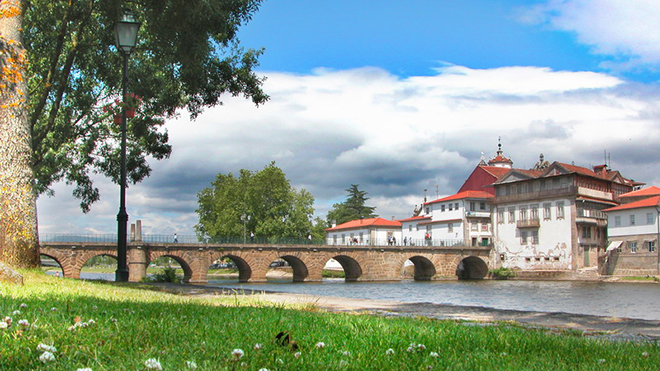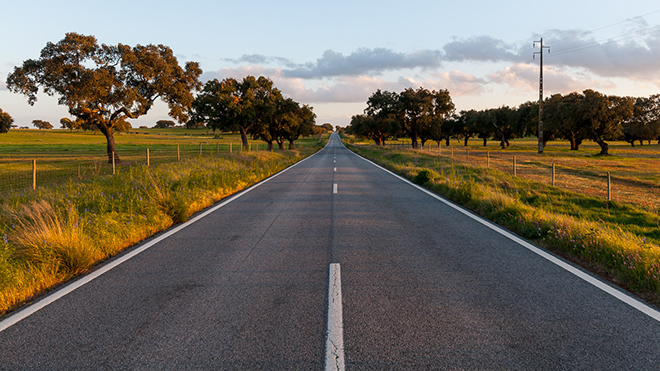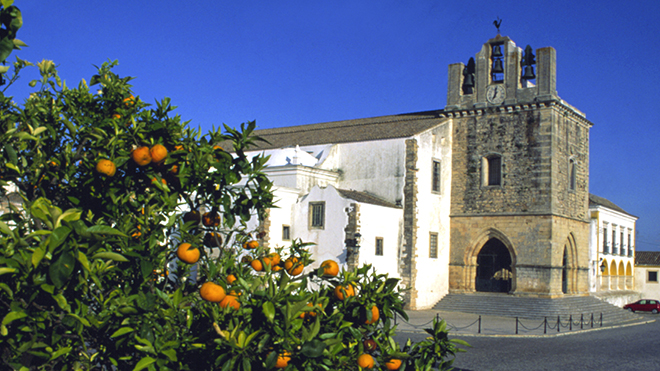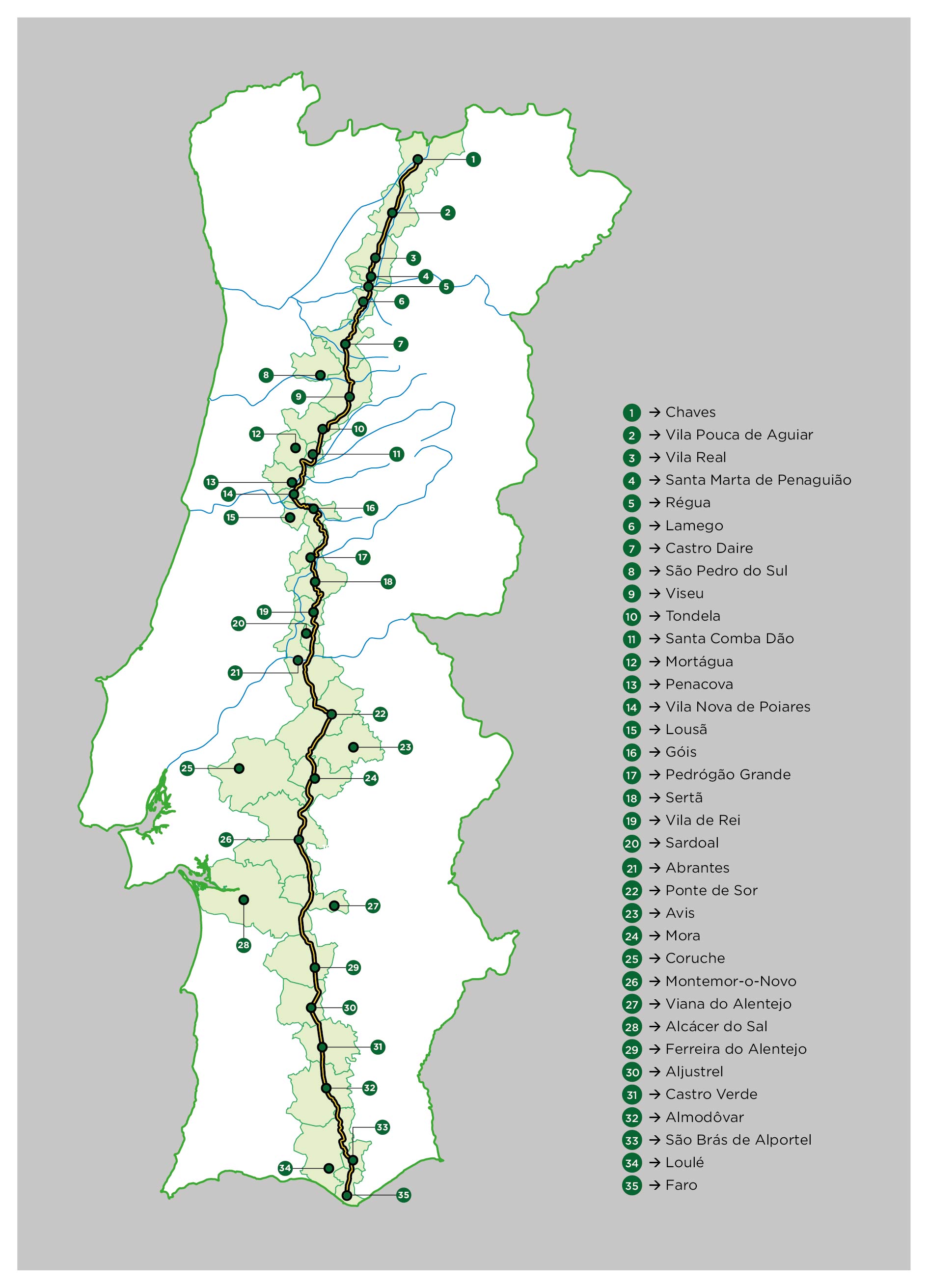From the north to the south of Portugal, along National Road 2

Explore the interior of Portugal along National Road 2 as it crosses the country from one end to the other.
From Chaves, in the North, close to the Spanish border, to Faro in the Algarve on the Atlantic Coast, the longest road in Portugal is 739 kilometres long and has a host of stories to tell. The perfect itinerary for exploring the culture and landscape of our country in all its authenticity.
Before leaving, to ensure that you have a souvenir proving your journey along this famous route, you need to obtain your passport from a Tourist Office. When you stop to visit the different locations en route be sure to get it stamped to prove that you were there. 
Photo: Chaves - Ponte romana © ARPT Porto e Norte
We suggest that you start your journey next to the zero kilometre milestone at the roundabout near the Public Park in Chaves. This mountainous area has a wealth of spas, such as those of Chaves itself, which were greatly appreciated by the Romans, or those of Vidago and Pedras Salgadas whose charm takes us back to the Belle Epoque. The road continues past Vila Real and Santa Marta de Penaguião and crosses the Alto Douro Wine Region, with its breathtaking scenery, classified as a UNESCO World Heritage Site. To learn more about this territory, visit the Douro Museum in Peso da Régua, which celebrates the wine tradition of the oldest demarcated wine region in the world. 
Photo: Vale do Douro © Rui Cunha
The road crosses the Douro River and passes through Lamego, a historic city where visits to the Cathedral and the Sanctuary of Our Lady of Remedies are not to be missed. The latter is the scene of one of the most important pilgrimages of the country every September. Further south, at the heart of another demarcated wine region, the Dão, Viseu has unmissable artistic treasures such as the Grão Vasco Museum and the Cathedral.
Nacional 2 continues through the heart of the country, passing through places such as Tondela, Penacova, Lousã and Sertã, where there are many river beaches, authentic oases of freshness on hot summer days. The site of the actual geodetic centre of the country is marked with a milestone - the Picoto da Melriça in the municipality of Vila de Rei, an essential stamp in your passport. In Abrantes, the final stop north of the Tagus river, climb up to the castle to enjoy the sweeping panorama over much of the river and towards Beira Baixa, Alentejo and Ribatejo. 
Photo: Estrada Nacional 2 © Foge comigo! - Fernando Romão
To the south of the Tagus, the Alentejo is a region of plains stretching to the horizon and striking traditions, some of which have been elevated to the category of world heritage such as the music of the Alentejo Cante or the manufacture of cowbells. In Mora, visit the Fluviário (freshwater aquarium) that demonstrates the diversity of the fauna and flora of our rivers. In Coruche, at the Cork Industry Observatory, you can learn all about the remarkable cork oaks that dominate the Alentejo landscape, and which have their own themed route in the Algarve in São Brás de Alportel. 
Photo: Faro - Largo da Sé © Arquivo Turismo de Portugal
After crossing eleven districts and 35 municipalities, National Road 2 ends in Faro, looking out to sea. Next to Ria Formosa, the capital of the Algarve, a seductive city of historical riches, is the perfect finale for this journey that travels through so many stories. Come and explore them at your own pace.








 Explore
Explore 
 Remember and Share
Remember and Share 


